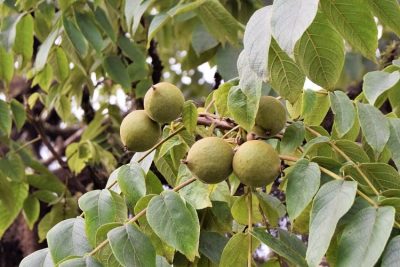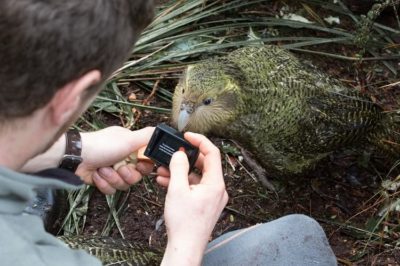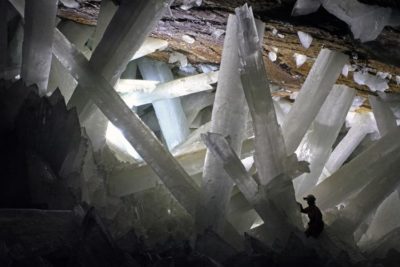Rainbow Eucalyptus: A Stunning Demonstration of Nature’s Vibrant Art
Share

Rainbow Eucalyptus in Garden of Eden Arboretum, Hawaii. (Thomas / Flickr)
The Rainbow Eucalyptus has several names to reflect its myriad hues, also known as the Mindanao gum or Rainbow gum. The scientific name of the plant is Eucalyptus Deglupta, coined by Carl Ludwig Blume. It is a tall, majestic tree with a kaleidoscopic trunk, and is native to the Philippines, Indonesia and Papua New Guinea.
Spectacular as it is, nature has myriad ways of exhibiting her beauty. Sometimes it is through a subtle flower, beautiful in its understatedness, at others, a more vibrant and obvious expression of colour. The Rainbow Eucalyptus is definitely in the latter category, mesmerizing onlookers with its brilliant colouring.
An enchanting tree
The tree earns the ‘rainbow’ nickname because of its periodic change in colours. It sheds the outer layer of its bark, each time revealing a new colour. In its native environment, the tree reaches a massive height of 250 feet. On U.S soil it reaches a mere 100-125 feet, which is still pretty large compared to standard trees. The Rainbow Eucalyptus is unique, considering it is the only variant of the eucalyptus tree found in the Northern Hemisphere. It does not grow in frost-prone climates, thus mostly thriving in Hawaii, southern parts of California, Texas and Florida.
The kaleidoscopic trunk of rainbow eucalyptus tree
Yellow, Green, Orange, Red, Brown, Purple, Maroon and Blue are a few of the colours visible on the tree trunk. While this may sound farfetched, it is an astounding feat of nature that actually exists. In fact, the colours on the trunk are so captivating and bright, they may even look fake or painted on. Sometimes, it also ends up giving a pastel effect. Each tree sheds its skin in a unique manner, ensuring no two trees have the same colouration in any given point in time. The Rainbow Eucalyptus is also referred to as a ‘living work of art’.

A rainbow eucalyptus tree. (Udi h Bauman / Flickr)
The singular features of the tree
As mentioned earlier, the tree reaches a height of 250 feet in its native habitat. Out of its native environment, its growth is stunted to a maximum height of 100-125 feet. The diameter of the trunk varies within 6 to 8 feet (or) 72 to 96 inches. The tree produces both flowers and leaves in abundance. While the flowers are white in colour, the leaves are sufficiently wide and evergreen. The leaves of the Rainbow Eucalyptus have glands which secrete aromatic oils. When these leaves are pressed, they release a relaxing and pleasant scent. However, the quantity of oil produced is less than other eucalyptus trees. This particular variant is thus not used for commercial purposes. The tree is used to produce paper from pulpwood in the Philippines.
The no-petal flowers

Flowers of rainbow eucalyptus. (Forest & Kim Starr)
Although the flowers of the Rainbow Eucalyptus do have stamens and pistils, they lack petals and sepals. The anatomy of the flower is complex and consists of two sets of reproductive organs: stamens being the male reproductive organ and pistils, the female.
Taking up the shape of a capsule, the flower bud has a conical lid called an operculum. With time, the operculum matures and becomes dark and wrinkled. As the bud opens, the stamen expands and pushes the operculum off the top of the capsule. There are several stamens which look like tassels, surrounding the pistil.
The capsule then becomes a woody fruit as soon as pollination and fertilization have been completed, and is referred to as a gumnut. Bees carry out the pollination required by the flowers of the Rainbow Eucalyptus.
Eucalyptus oil and its properties

Leaves of Eucalyptus deglupta. (Forest & Kim Starr)
Long, narrow and having a spear-like shape, the leaves of the plant have a leathery texture and hang from the branches of the tree. The oil produced by these leaves is volatile and aromatic in nature. When several trees grow near each other, they form a thin vapour, almost like a mist, in the surrounding air.
There are several uses of eucalyptus oil which provide a number of health benefits if used with utmost care and precision. The vapour opens airways in breathing problems and is often used in massage treatments for the relaxation of muscles. It is, however essentially toxic and dangerous if used in its raw form. The oil must always be sufficiently diluted with other liquids to make it useful. The key active ingredient is eucalyptol or cineol. A lot is yet to be discovered in the case of medicinal uses of eucalyptus oil.
Why is the Rainbow Eucalyptus a colourful marvel?
After extensive research, a botany professor at Florida International University by the name of David Lee has come to a conclusion about the plant’s colouration.
Each layer of the bark has thin cells that surround it. These are transparent in nature and allow us to observe the chlorophyll produced by these plants during photosynthesis. As time passes, the layer of cells is filled with pigments called tannins. Tannins are primarily brown, red or yellow in colour. However, various combinations of tannins result in the myriad colours that we see on The Rainbow Eucalyptus.
Disadvantages of growing the rainbow eucalyptus
While these trees are mesmerizing and majestic, they also have certain disadvantages to keep in mind when you grow it. They capture a lot of space due to their massive height, and during shedding season, it creates a substantial mess. Its roots may affect buildings and roads, and weaken the underlying foundation.
Another drawback is that the tree does not always grow the colours that are expected of it. The colours often depend on the place where it is grown and the weather in that particular area. Conditions such as temperature, humidity, airflow etc are also major factors that affect the colouration in these trees.
Unique facts about the rainbow eucalyptus
The tree can have a lifespan of 50 – 150 years, growing an average of 3 feet per year and is said to be deer resistant. Koalas mainly feed on eucalyptus leaves, which require a lot of energy to digest. This is why a koala sleeps up to twenty hours a day, with minimal energy expenditure. Interestingly, the shedding that produces the colours in a Rainbow Eucalyptus, is also an effective method for the tree to get rid of parasites.
Enjoyed this article? Also, check out “The Manchineel Tree: One of the Most Toxic and Dangerous Tree in the World“.
Fact Analysis:
STSTW Media strives to deliver accurate information through careful research. However, things can go wrong. If you find the above article inaccurate or biased, please let us know at [email protected]













